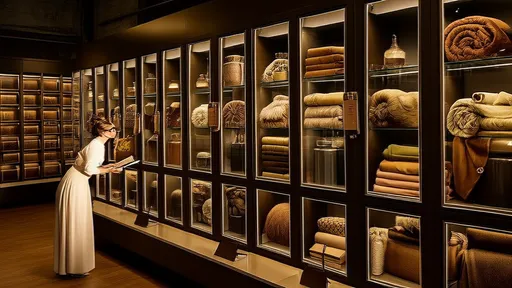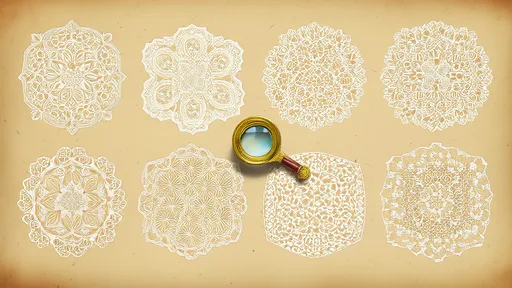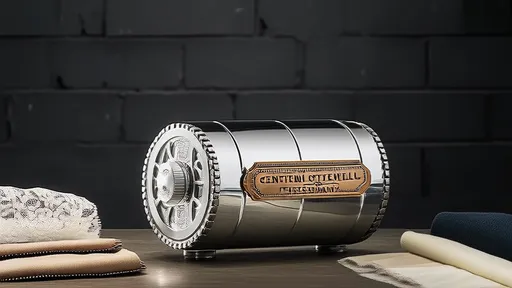In the quiet corridors of textile conservation labs, a revolution is brewing—one that challenges our very understanding of material permanence. The concept of a "fabric time capsule" has shifted from speculative fiction to tangible reality, as scientists and artisans collaborate to create textiles capable of resisting decay for centuries. This isn't merely about preservation; it's about engineering threads that defy entropy itself.
The quest began with an uncomfortable truth: even the most carefully stored historical garments eventually succumb to yellowing, fiber breakdown, or microbial attack. Traditional methods like acid-free boxes and climate control merely slow the inevitable. But what if fabric could be designed from molecular levels to become its own archival system? Researchers at the Heritage Materials Institute have developed a proprietary cellulose-based matrix infused with stabilized nanoparticles that actively neutralize oxidative radicals—the primary cause of textile aging.
Silk has emerged as an unexpected hero in this longevity pursuit. When treated with a bioengineered protein derivative derived from extremophile microorganisms, silk fibers demonstrate remarkable resistance to both light degradation and biological decomposition. The treatment leaves no visible alteration to the fabric's hand or drape, a crucial consideration for couture conservators. Early accelerated aging tests suggest treated samples maintain 98% tensile strength after simulated 150-year exposure.
Perhaps most intriguing is the development of "memory wool"—a specially bred merino variety whose follicles are stimulated to produce keratin structures with enhanced cross-linking. Unlike conventional wool that felts or becomes brittle over time, memory wool actually tightens its molecular structure when exposed to minor environmental stressors, creating a self-reinforcing preservation mechanism. Several European royal households have already commissioned undergarments from this material as foundation layers for heirloom garments.
The ethical implications spark heated debate in conservation circles. Purists argue that creating "immortal textiles" disrupts the natural lifecycle of materials essential to understanding historical context. Others counter that future generations deserve direct tactile connections to our era beyond digital records or glass-encased relics. A compromise may lie in coded degradation—materials engineered to last precisely 100 years before beginning controlled breakdown, creating built-in obsolescence timelines.
Military applications have driven much of the funding, with governments seeking uniforms that survive decades in harsh conditions without maintenance. The same technology now protects delicate 15th-century ecclesiastical vestments in Vatican archives. This strange marriage of purposes highlights how preservation science often advances through unlikely partnerships between cutting-edge research and ancient traditions.
Loom technicians report needing to completely recalibrate their equipment when working with these new materials. The fibers behave differently under tension, requiring modified shuttle speeds and humidity controls during weaving. Some traditionalists complain the fabrics "lack soul," while avant-garde designers celebrate the opportunity to create garments meant to outlive their creators by generations.
As the first consumer products reach market—limited edition scarves with 75-year warranties against fading or fiber degradation—we must confront philosophical questions about permanence. In a culture obsessed with disposability, these textiles force us to consider what deserves to endure. Perhaps the ultimate test won't be in laboratories, but in whether future civilizations will find our preserved fabrics meaningful enough to keep.
The project's most poetic achievement may be a single square meter of linen, woven with strands of platinum and treated with seven proprietary solutions, currently undergoing real-time aging in a Swiss vault. Dated 2123 as its target opening, this fabric time capsule contains no messages or artifacts—just the quiet ambition that something as fragile as cloth might bridge centuries.

By /Jul 16, 2025

By /Jul 16, 2025

By /Jul 16, 2025

By /Jul 16, 2025

By /Jul 16, 2025

By /Jul 16, 2025

By /Jul 16, 2025

By /Jul 16, 2025

By /Jul 16, 2025

By /Jul 16, 2025

By /Jul 16, 2025

By /Jul 16, 2025

By /Jul 16, 2025

By /Jul 16, 2025

By /Jul 16, 2025

By /Jul 16, 2025

By /Jul 16, 2025

By /Jul 16, 2025